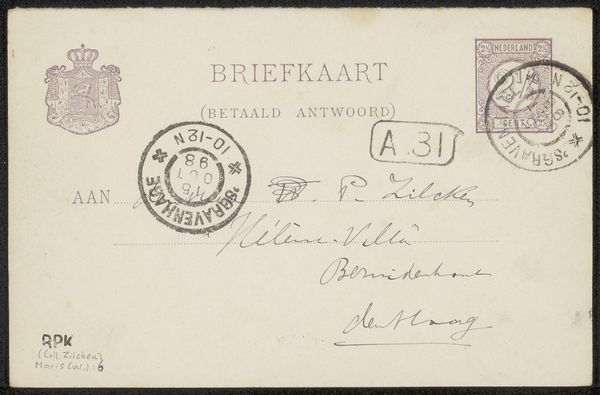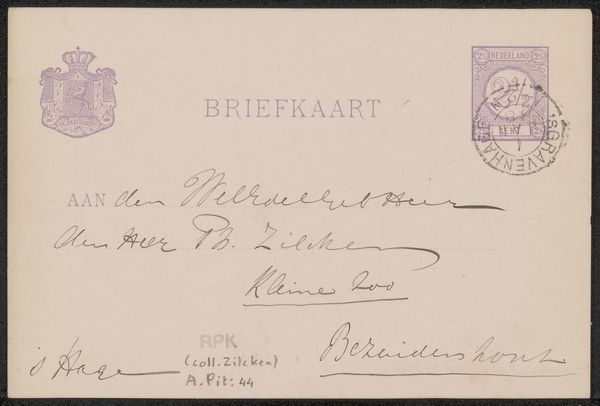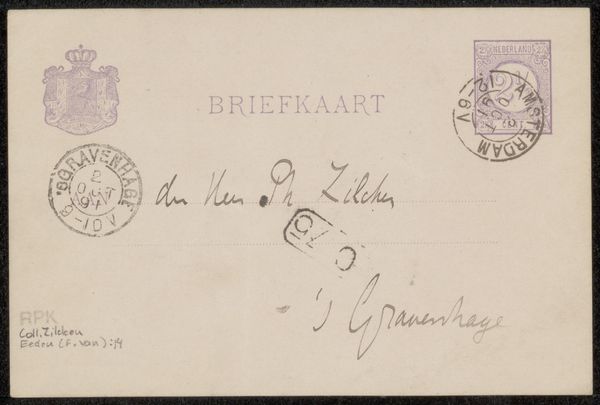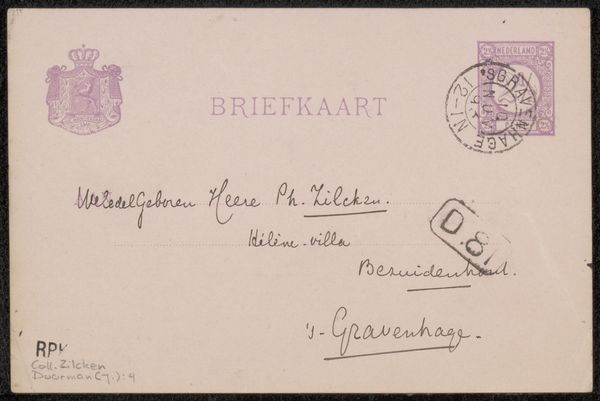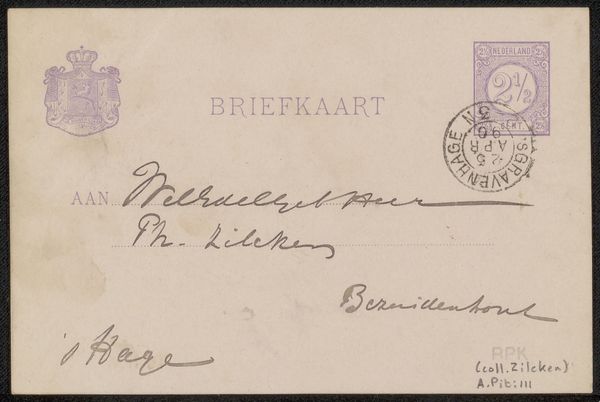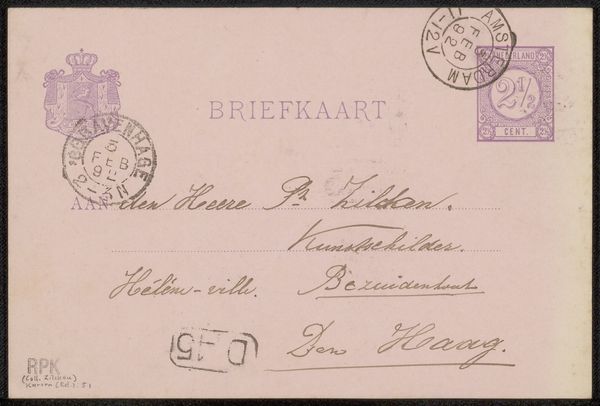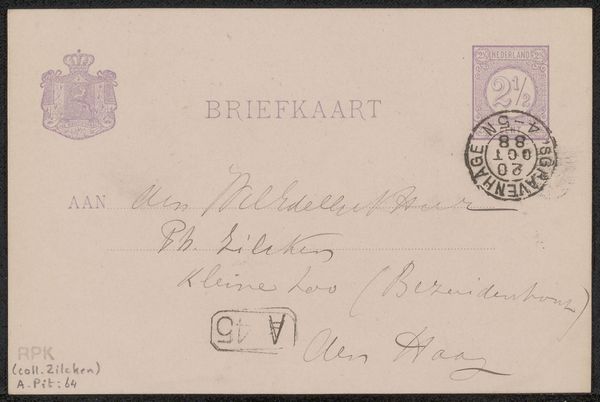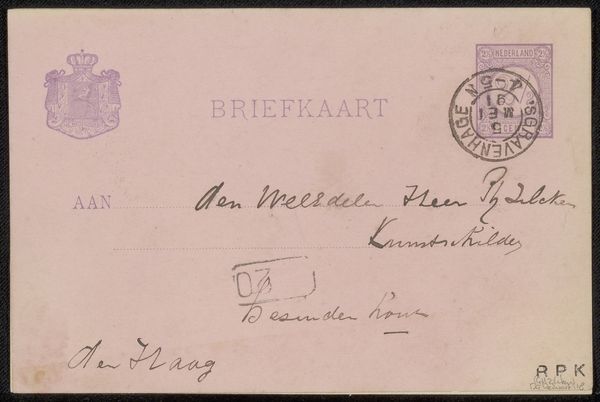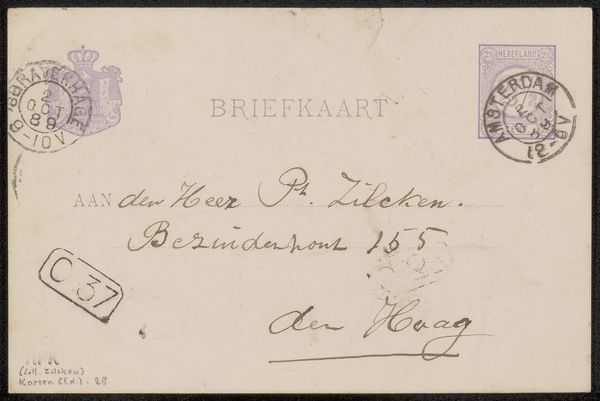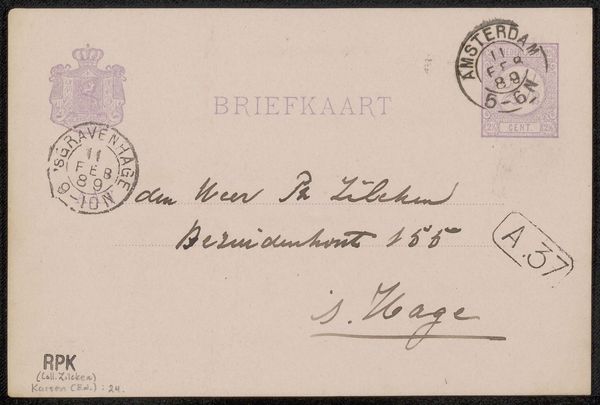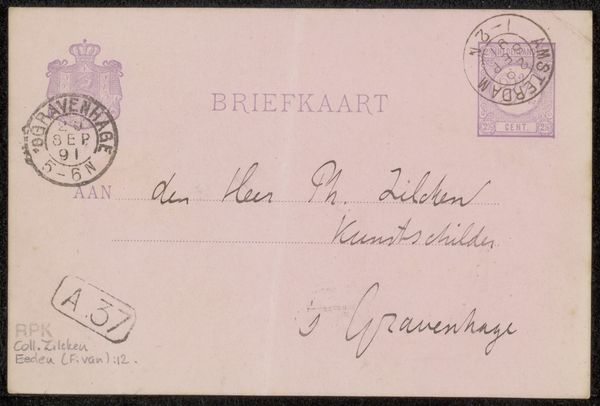
paper, ink, pen
#
pen sketch
#
paper
#
ink
#
pen-ink sketch
#
pen work
#
pen
#
post-impressionism
Copyright: Rijks Museum: Open Domain
Editor: This is "Briefkaart aan Philip Zilcken," possibly from 1889, by Eduard Karsen. It’s a pen and ink sketch on paper, basically a postcard. What immediately strikes me is how ordinary it seems, almost mundane. How should we interpret something so…functional? Curator: Functional indeed. Look at the materiality itself: inexpensive paper, mass-produced postage. Consider the socio-economic context. The rise of postal services, the democratization of communication – who previously could afford such individualized correspondence? Note the 'pen work' – a readily accessible, low-cost medium. Doesn't this challenge our typical assumptions about "high art"? Editor: I see what you mean. It makes me think about accessibility and who gets to participate in artmaking. Was Karsen commenting on this himself through his choice of materials? Curator: Precisely! Karsen isn't using marble or oil paint for a commissioned portrait. This simple card highlights a shift in production and consumption. We see artistry in the everyday, in the act of communication itself. Who was Zilcken, the recipient? Investigating *that* relationship adds another layer. Consider this in contrast to the artistic patronage of previous centuries, wouldn't you agree? Editor: Yes, absolutely! Looking at it this way, the humble postcard becomes a powerful statement about social change and artistic production. The means of creating and sending the art are part of the statement itself. Curator: Exactly. It reminds us to look beyond the finished "masterpiece" and consider the processes and materials that shape our understanding of art. Editor: This really changes how I see not just this piece, but also how I approach understanding art in general! Curator: I'm glad you noticed. Recognizing that is a perspective shift indeed!
Comments
No comments
Be the first to comment and join the conversation on the ultimate creative platform.

